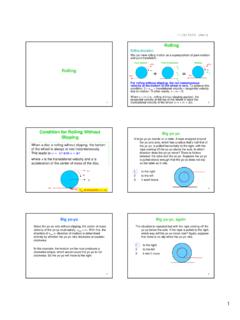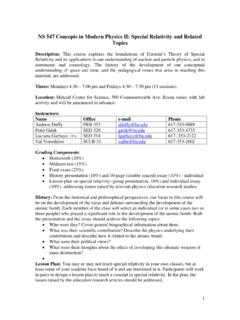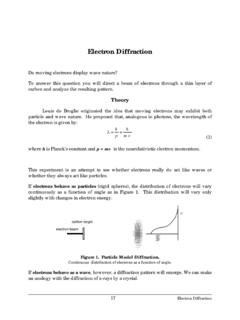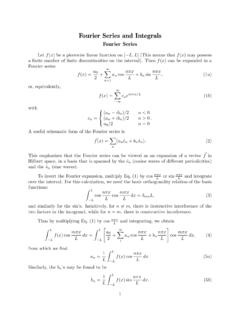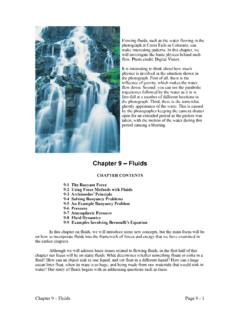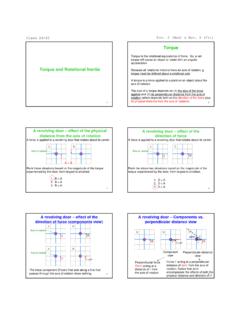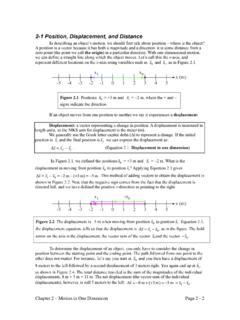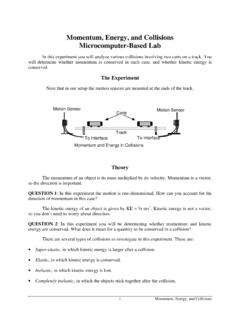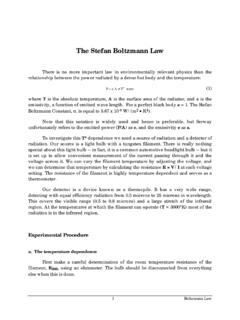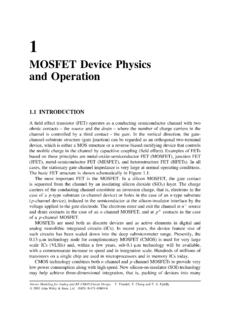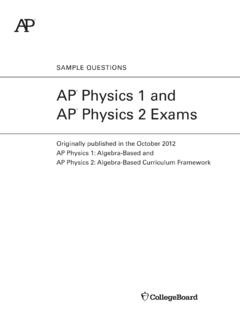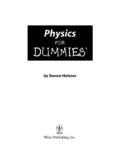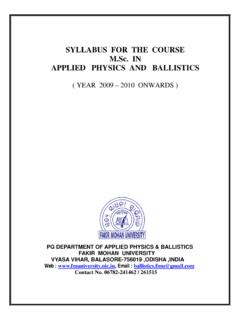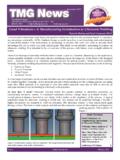Transcription of A Beginners Guide to Contract Bridge
1 A Beginners Guide to Contract Bridge January 16, 2009. 1. Contents 1 introduction 6. Beginning a New Hand .. 6. Bidding .. 7. Legal Calls .. 7. Meaning of Bids .. 9. An Example Auction .. 9. Play of the Hand .. 10. Scoring .. 11. 2 Hand Valuation 14. High Card Points .. 15. Distribution Points .. 15. Long Suits and Short Suits .. 18. 3 Opening the Bidding 20. Opening Requirements .. 20. Order of Preference .. 21. Opening 1 NT .. 23. Suited Openings .. 23. Opening 1 / .. 23. Opening 1 .. 24. Opening 1 .. 24. Opening 2 .. 25. Final Thoughts .. 25. 4 Responding to the Opening Bid 25. 5 Overcalls and Doubles 25. 6 Conventions I: The Bare Essentials 25. Stayman .. 25. 7 Conventions II: Clever Additions 25. 8 Conventions III: Heavy Artillery 25. 2. 9 Defense 25. Leads .. 25. Signaling .. 25. False Carding .. 25. 10 Card Combinations 25.
2 The Finesse .. 25. The Drop .. 25. Endplay .. 25. 11 Ethics 25. 12 Variations I: ACOL 25. 13 Variations II: Two Over 1 (2/1) 25. 14 Variations III: Strong 1 Systems and Precision 25. 3. List of Tables 1 Scoring Bonuses for Duplicate Bridge .. 13. 2 Undertrick Penalties in Duplicate Bridge .. 14. 4. List of Figures 1 An Example Deal .. 6. 2 An Example of an Auction .. 10. 3 Contracts and their Bonuses .. 13. 4 Counting High Card Points .. 15. 5 Counting Distribution Points .. 16. 6 Counting Distribution Points with a Fit .. 17. 7 Holdings that Should not be Double-Counted .. 18. 8 Long Suits Produce Tricks in No Trumps .. 19. 9 A Balanced Hand with a Strong Club Suit .. 21. 10 Opening Bids: Order of Preference .. 22. 11 Responding to Partners Suited Opening .. 25. 12 Responding to Partners 1 NT Opening .. 26.
3 13 Responding to Stayman .. 27. 5. 1 introduction Contract Bridge is a four-handed trick-taking card game played with a stan- dard 52-card deck between two cooperative partnerships, each consisting of two players who sit opposite one and other. The goal of the game is sim- ple: win as many tricks for your side as possible in each hand. There are various ways of keeping score depending on how many players are competing but techniques and strategies involved in the play of the hand are largely independent of the scoring method. Beginning a New Hand The dealer deals out the entires deck, one card at a time, beginning with his left-hand opponent (LHO), then his partner, then hi right-hand opponent (RHO), and finally himself. Players arrange their cards as they see fit (we recommend the player sort his hand by suits (club, diamonds, hearts, then spades left to right) and then by rank (deuce (low) through ace (high)) and wait for the dealer to make the first call.)
4 An example deal is show in Figure 1. Note that the four players are labeled according to the cardinal directions of the compass. S, N S QJ6 Board 1. Q52. J10432. J5. K9853 42. J8 N K1094. W E. 65 S A98. 6432 Q1097. A107. A763. KQ7. AK8. Figure 1: An Example Deal 6. Bidding After the hand is dealt, the partnerships compete with one and other to declare the Contract . This is done via an auction (typically referred to as the bidding ) which begins with the dealer and proceeds to his left. In this section we assume south is the dealer. In Figure 1, the dealer is indicted in the top left-hand corner: the S in S, N S . When the dealer is ready, he may make any legal call. A call is any of the following: pass, bid of one club, bid of one diamond, bid of one heart, bid of one spade, bid of one no trump, bid of two clubs.
5 , bid of seven no trump, double, redouble. Whether or not the bid is legal is determined by the previous bids that have or have not been made. The bidding ends after three consecutive passes, or, one side bids seven no trump. The contact is thus set and is the last non-pass call made. Legal Calls Before we discuss what conditions must be satisfied for a call to be legal, we must discuss the ranking of the suits. Each suit is given a rank which is determined by alphabetical order, thus, clubs is the lowest ranking suit, next is diamonds, third is hearts, and the highest ranking suit is spades. < < < . In the prior section, we mentioned that one possible call was no trump . This call indicates the hand will be played without a trump suit. For the sake of bidding, no trump (NT) is the highest ranking suit: even higher than spades.
6 < < < < NT. If the call belongs to the following subset of calls, we call it a bid : bid of one club, bid of one diamond, bid of one heart, bid of one spade, bid of one no trump, bid of two clubs, .. , bid of seven no trump. For a bid to be legal, it must be at a higher level than all previous bids. Since the declarer is the first to make a call, he may choose from any of the calls that make up the bids. Suppose, for example, South, the dealer, bids 1 . It now becomes West's turn to make a call. If West wishes to make a bid in clubs, he must bid 2 . because the diamond suit outranks the club suit. On the other hand, if West wishes to bid a heart or spade suit, he may do so at the one-level via 1 or 1 , respectively. As another example, if South had opened the bidding with 7. 1 NT, then the lowest legal bid any player could make after South would be 2.
7 This covers all bids: a bid is legal if and only if all bids prior to it are of a lower After removing the bids from the set of calls, there are only three calls left: pass, double, and redouble. A call of pass is what it sounds like, you pass your opportunity to compete in that round of the auction. It does not imply you must pass for the rest of the auction: just that one turn. A pass is always a legal call. A call of double is a defensive bid. Suppose your LHO has bid 4 and you hold the AKQ of hearts. You may not believe your opponents will be able to make their Contract . A call of double means that if your opponents do not make their Contract , the penalty for failing to make is doubled. Alternatively, if your opponents do make their Contract , their score is doubled for doing so. A double (indicated by X, 1 4 X) is legal if and only if the last bid (note we use the term bid and not call) was made by one of your opponents.
8 In other words, you are not permitted to double your own bid or your partner's bid: you must only double your opponents. Suppose, for example, South, your partner, passes and West bids 1 . Now, as North, you can legally double. Further, if South, your partner, opens with 2 NT and West overcalls with 3 you, as North, may legally double. However, if the bidding had gone 1 from South (still your partner) and pass from West, you may not double, since the last bid was made by your partner. Finally, suppose you are South, and as dealer you pass, West bids 3 NT, North passes, and East passes. You would be allowed to double because the last bid was made by an opponent. A call of redouble is an aggressive bid for sure. Just as it sounds, it redoubles the penalty (or reward) for failing to make (or making) the Contract .
9 A. redouble is a legal call if and only if there is a double on the table , that is, one of your opponents has doubled your Contract , and the only calls made between you and the double are passes, and it was one of your opponents who made the double. In other words, after your opponent doubles, no bids can be made after the double if you are going to redouble. Consider some examples. South bids 1 NT and West doubles. You may, as North, redouble. 1. Note that this implies repeating a bid is forbidden. 8. Suppose South passes and West passes as well. As North, you open 1 NT. which East doubles. South passes and West passes too. As North, you may redouble. On the otherhand, if South passes and West passes as well. As North, you open 1 NT which East doubles. South bid 2 and West passes again. As North, you may not redouble because partner has removed the double with his 2 bid.
10 A redouble is indicated by XX as in 1 4 X . XX . Meaning of Bids We have discussed the order in which the auction proceeds and we have discussed how to make a legal call, but we not made mention of what any of these bids actually mean. First note that since the entire deck is split evenly between four players, there are thirteen total tricks. If the bidding were to start with I can win one trick with spades as trumps the bidding would take so long that the partnerships would essentially be able to reveal the contents of their entire hand to one and other and thus always arrive at the perfect Contract with little skill involved. Thus, the bidding begins at one trick above book. Book refers to the first six tricks. Thus, a bid of one clubs means I can make one trick above book with clubs as trumps . In other words: I can win seven tricks total with clubs as trumps.
